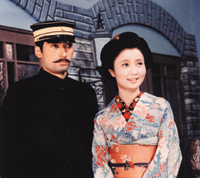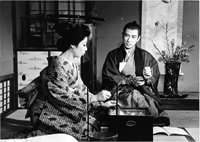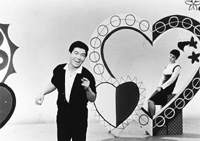
| Within 10 years of going on the air, television's popularity was confirmed, and the color TV set became one of the three consumer items—known as the "three sacred treasures"—that everyone wanted to own. During the 1960's, Japanese TV provided exciting entertainment programs of a type rarely seen elsewhere in the world, rooted in the rhythms and tastes of Japanese life. |
Television drama and the satellite effect |
|
Morning Drama serials blossom
|
Variety shows for
TV Made-for-TV programs appeared in the 1960's, including foreign TV movies, sports telecasts, quiz shows, and much more. Kansai-style stand-up comedies made their first appearance, as did musical variety shows.
The whole world viewed from home By the late 1960's, people could even follow the latest developments in the Vietnam War on a daily basis. Of course, there was an equivalent focus on domestic events and incidents as well. In 1969, a revision of the Public Offices Election Law allowed candidates to broadcast their political views, and TV came to play an increasingly important role in politics and social affairs. When hostage-taker Kim Hee Roh demanded to explain his views on TV, or live broadcasts showed the police ending a student siege at Tokyo University, unfolding events revealed a new era in which real life dramas were to be premised and played out on TV. The televised landing of the first men on the moon in 1969 also reinforced the sensation of a single world sharing a common experience. |



